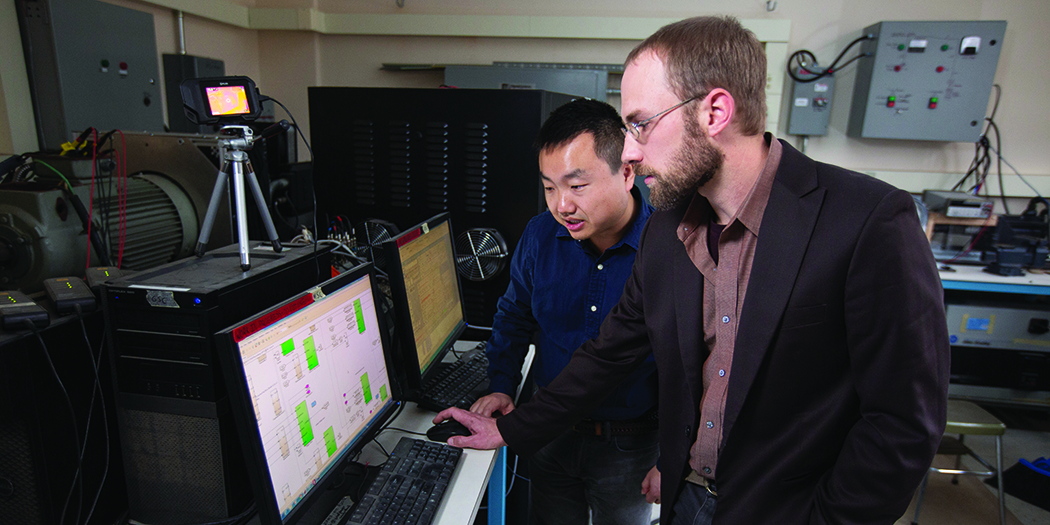For a smart, resilient grid
Zhaoyu Wang, Harpole-Pentair assistant professor of electrical and computer engineering, is using data-driven science and machine learning to bring real-time modeling to electric power systems – and to enhance system resilience in severe weather events.
Real-time, grid-wide monitoring
Wang’s team is customizing machine learning algorithms currently used in photo processing and voice recognition for the challenge of working with complex power system data.
They’ve partnered with local utility organizations–ranging from a large, private utility to a rural co-op– to gather three years of data for more than 6,000 customers with smart electric meters.
“Power system data has many unique features, including time series correlations, along with physical constraints like specified voltage levels, and other impact factors such as weather and human behavior,” said Wang. “Add to that the rise in decentralized, customer-owned renewable energy sources in the electric grid – and the task of creating usable models for the power industry is a big one.”
So far, Wang’s team has discovered never-seen before load patterns for different times of the day and in different seasons. What’s next is finding techniques to extend the data gathered from smart meters to the rest of system, using big-data techniques to give utilities more visibility of individual solar energy sources – and combining all these capabilities into verified software tools so utilities can monitor their systems reliably and in real time.
Enhanced power system resilience
Wang is also examining how data-driven strategies can help restore power systems more quickly after severe weather and other natural disasters.
“For many years, power system recovery was done based on physical checks to determine what areas were down – and experience-based recommendations of how to prioritize repairs,” said Wang. “Big-data can bring a systematic approach to disaster recovery logistics, optimizing resource use and speeding up fi xes.”
Wang’s team is investigating how distributed solar sources can offer an additional strategy to supply electricity after storms.
“When the main, centralized source of power has been disrupted by a severe event, localized solar energy may be a key way to provide emergency power while the overall system is fully restored,” said Wang. “To take full advantage of decentralized, renewable power sources in the grid, we are developing data-backed models to estimate system conditions after natural disasters – and perhaps even predict after-storm scenarios.”
